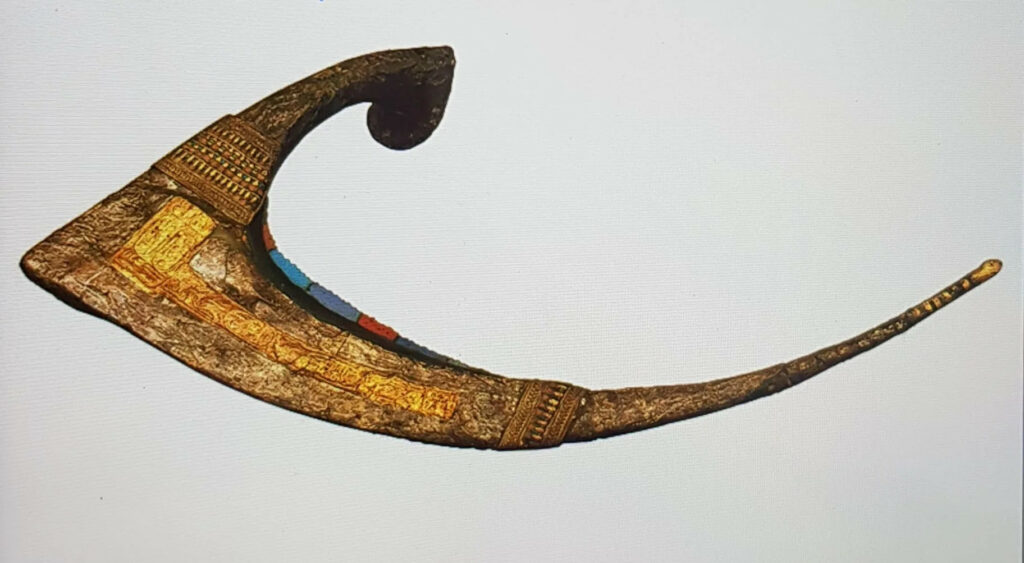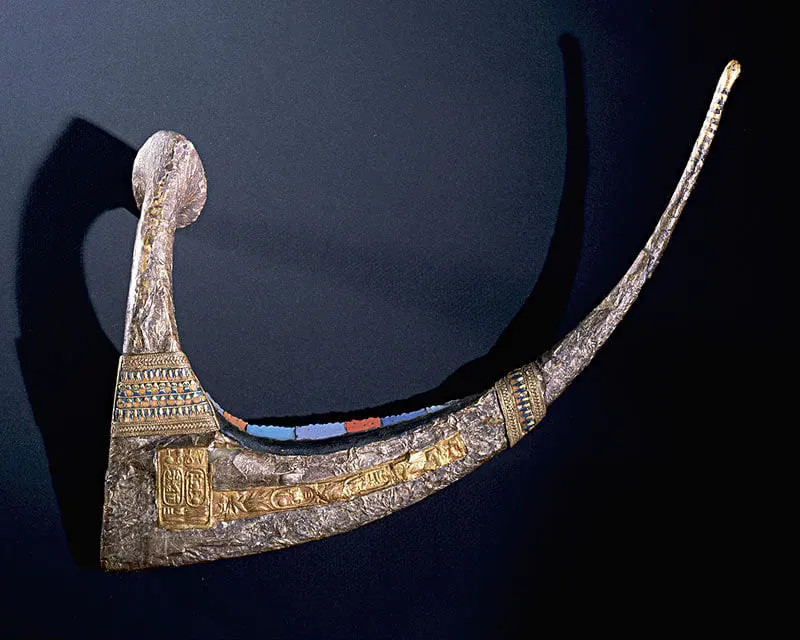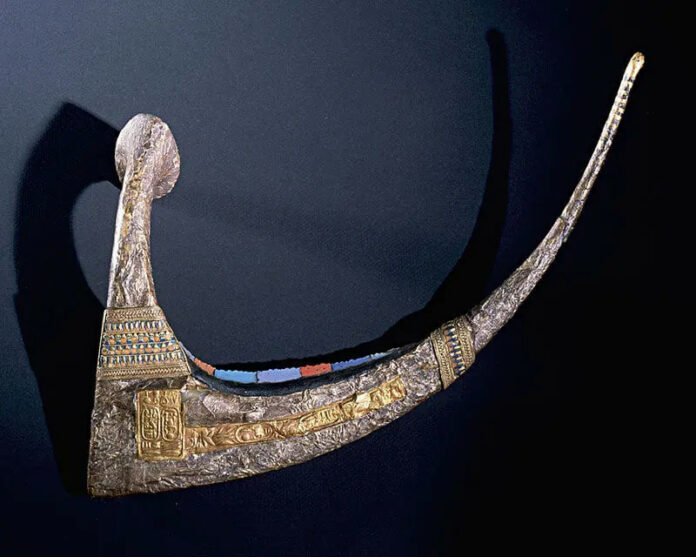Unveiling the Treasures of Ancient Egypt
A Gleaming Artifact from the Boy King’s Tomb

In the depths of the Valley of the Kings, amidst the treasures of Tutankhamun’s tomb, lies a golden sickle that tells a tale of both earthly abundance and otherworldly power. This exquisite artifact, crafted from gilded wood and adorned with the young pharaoh’s royal cartouches, stands as a testament to the importance of agriculture in ancient Egyptian life and afterlife.
The Sickle’s Dual Purpose: Ceremony and Protection
The ceremonial sickle, with its unique serrated blades of colored glass, served a dual purpose in the pharaoh’s world. During life, it likely played a crucial role in the annual harvest festival of Peret, where the king himself would participate in rituals to ensure bountiful crops. In death, it became a powerful tool for Tutankhamun’s journey through the afterlife, capable of both harvesting celestial grain and warding off evil spirits that might impede his path.

From Earth to Eternity: The Evolution of Sickles in Ancient Egypt
The tradition of placing sickles in tombs dates back to the early Dynastic period, reflecting the tool’s significance in Egyptian culture. Initially crafted with wooden handles and flint blades, these implements evolved over time, culminating in the ornate golden sickle found in Tutankhamun’s burial chamber.
Grain: The Foundation of Life and Afterlife
In ancient Egypt, grain was more than just sustenance; it was the cornerstone of the economy and spiritual beliefs. The humble sickle played a vital role in harvesting the crops that would become the bread and beer consumed daily by the living and offered eternally to the dead. This connection between earthly harvest and divine offerings is beautifully captured in tomb reliefs spanning from the Old Kingdom to the New Kingdom.
A Glimpse into Eternity
Today, this golden sickle rests in the Egyptian Museum in Cairo, cataloged as JE 61264. It stands as a shining example of the intricate relationship between life, death, and rebirth in ancient Egyptian culture, inviting modern observers to marvel at the craftsmanship and symbolism of a civilization that flourished over three millennia ago.

